Monacor EMG-650P Handleiding
Bekijk gratis de handleiding van Monacor EMG-650P (2 pagina’s), behorend tot de categorie Microfoon. Deze gids werd als nuttig beoordeeld door 40 mensen en kreeg gemiddeld 3.9 sterren uit 20.5 reviews. Heb je een vraag over Monacor EMG-650P of wil je andere gebruikers van dit product iets vragen? Stel een vraag
Pagina 1/2

ELECTRONICS FOR SPECIALISTS ELECTRONICS FOR SPECIALISTS ELECTRONICS FOR SPECIALISTS ELECTRONICS FOR SPECIALISTS ELECTRONICS FOR SPECIALISTS ELECTRONICS
EMG-650P
Bestell-Nr. • Order No. 0234330
MONACOR INTERNATIONAL GmbH & Co. KG • Zum Falsch 36 • 28307 Bremen • Germany
Copyright© by MONACOR INTERNATIONAL. All rights reserved. A-0531.99.03.06.2021
31 =
2 = Signal +
3 = Signal
-
EMG-650P
2 1
3 41 2
Microphone électret col de cygne
Cette notice s’adresse aux utilisateurs sans connais-
sances techniques particulières. Veuillez lire la pré-
sente notice avant le fonctionnement et conser-
vez-la pour pouvoir vous y reporter ultérieurement.
1 Possibilités d’utilisation
Ce microphone col de cygne avec de très bonnes pro-
priétés de transmission et excellente compréhension
des discours est spécialement conçu pour des annonces,
conférences ou autre transmission de discours, où un mi-
crophone fixe est nécessaire. Il peut se brancher direc-
tement sur une prise micro XLR ou peut également être
utilisé comme microphone de table, combiné au pied
micro DMS-1. Pour le fonctionnement du microphone,
une alimentation fantôme (9 – 48 V) est nécessaire.
2 Conseils importants
Le microphone répond à toutes les directives nécessaires
de l’Union européenne et porte donc le symbole .
•
Le microphone n’est conçu que pour une utilisation
en intérieur. Protégez-le de tout type de projections
d’eau, des éclaboussures, d’une humidité élevée et de
la chaleur (plage de température de fonctionnement
autorisée : 0 – 40 °C).
•
Pour le nettoyer, utilisez uniquement un chiffon sec et
doux, en aucun cas de produits chimiques ou d’eau.
•
Nous déclinons toute responsabilité en cas de dom-
mages matériels ou corporels résultants si le micro-
phone est utilisé dans un but autre que celui pour le-
quel il a été conçu, s’il n’est pas correctement branché
ou s’il n’est pas réparé par une personne habilitée ; en
outre, la garantie deviendrait caduque.
Lorsque le microphone est définitivement
retiré du service, éliminez-le conformément
aux directives locales.
CARTONS ET EMBALLAGE
PAPIER À TRIER
3 Fonctionnement
1) Placez la bonnette de protection anti-pop et anti-vent
(1) livrée sur le microphone.
2) Fixez le microphone sur une prise micro XLR ou sur un
pied micro. L’entrée micro doit délivrer une alimenta-
tion fantôme (9 – 48 V). Si ce n’est pas le cas, connectez
le microphone via une alimentation fantôme distincte
(par exemple EMA-3 ou EMA-200) à l’appareil audio.
Dès que l’alimentation fantôme est présente au micro,
le témoin de fonctionnement (3) brille.
3) Orientez le microphone de manière optimale avec le
col de cygne (2).
4) Pour activer le filtre Low Cut (passe-haut 180 Hz, 12 dB /
octave), poussez le sélecteur (4) sur la position
(diminution des graves pour compenser l’effet de
proximité).
4 Caractéristiques techniques
Type de micro : . . . . . . . . . . . . électret
Caractéristique : . . . . . . . . . . . cardioïde
Bande passante : . . . . . . . . . . 30 – 18 000 Hz
Sensibilité : . . . . . . . . . . . . . . . 4,5 mV/ Pa à 1 kHz
Impédance : . . . . . . . . . . . . . . 180 Ω
Pression sonore maximale : . . 130 dB
Alimentation : . . . . . . . . . . . . alimentation fantôme
⎓9 – 48 V
Dimensions : . . . . . . . . . . . . . . 9 / 19 mm × 600 mm⌀
Connexion : . . . . . . . . . . . . . . . XLR, symétrique
Tout droit de modification reservé.
Electret Gooseneck Microphone
These instructions are intended for users without
any specific technical knowledge. Please read these
instructions carefully prior to operation and keep
them for later reference.
1 Applications
This gooseneck microphone with very good transmission
characteristics and excellent speech intelligibility is
ideally suited for announcements, lectures or any other
speech transmission requiring a stationary microphone.
It can be directly connected to an XLR microphone input
or, together with the microphone base DMS-1, used
as a desk microphone. For operating the microphone,
phantom power (9 – 48 V) is required.
2 Important Notes
The microphone corresponds to all relevant directives of
the EU and is therefore marked with .
•
The microphone is suitable for indoor use only. Pro-
tect it against dripping water and splash water, high
air humidity and heat (admissible ambient temperature
range 0 – 40 °C).
•
For cleaning only use a dry, soft cloth; never use chem-
icals or water.
•
No guarantee claims for the microphone and no liabil-
ity for any resulting personal damage or material dam-
age will be accepted if it is used for other purposes than
originally intended, if it is not correctly connected or
not repaired in an expert way.
If the microphone is to be put out of opera-
tion definitely, dispose of the speaker in ac-
cordance with local regulations.
3 Operation
1) Place the windshield / pop protection (1) provided on
the microphone.
2) Connect the microphone to an XLR microphone input
or a microphone base. The microphone input must
provide phantom power (9 – 48 V). If not, connect the
microphone via a separate phantom power supply unit
(e. g. EMA-3 or EMA-200) to the audio unit. As soon as
the microphone is supplied with phantom power, the
power LED (3) lights up.
3) Adjust the microphone in an optimum way with the
gooseneck (2).
4) To switch on the low cut filter (high pass 180 Hz, 12 dB /
octave), set the switch (4) to position (bass attenua-
tion for compensating the proximity effect).
4 Specifications
Type of microphone: . . . . . . . electret
Pick-up pattern: . . . . . . . . . . . cardioid
Frequency range: . . . . . . . . . . 30 – 18 000 Hz
Sensitivity: . . . . . . . . . . . . . . . . 4.5 mV/ Pa at 1 kHz
Impedance: . . . . . . . . . . . . . . . 180 Ω
Max. SPL: . . . . . . . . . . . . . . . . . 130 dB
Power supply: . . . . . . . . . . . . . phantom power ⎓9 – 48 V
Dimensions: . . . . . . . . . . . . . . 9 / 19 mm × 600 mm⌀
Connection: . . . . . . . . . . . . . . XLR, balanced
Subject to technical modification.
Elektret-Schwanenhalsmikrofon
Diese Anleitung richtet sich an Benutzer ohne be-
sondere Fachkenntnisse. Bitte lesen Sie die Anlei-
tung vor dem Betrieb gründlich durch und heben
Sie sie für ein späteres Nachlesen auf.
1 Einsatzmöglichkeiten
Dieses Schwanenhalsmikrofon mit sehr guten Übertra-
gungseigenschaften und hervorragender Sprachver-
ständlichkeit ist speziell für Durchsagen, Vorträge oder
sonstige Sprachübertragung geeignet, bei denen ein
feststehendes Mikrofon be nötigt wird. Es lässt sich di-
rekt auf einen XLR-Mikrofonanschluss ste cken oder zu-
sammen mit dem Mikrofonfuß DMS-1 als Tisch mikrofon
einsetzen. Zum Betrieb des Mikrofons ist eine Phantom-
speisung (9 – 48 V) erforderlich.
2 Wichtige Hinweise
Das Mikrofon entspricht allen relevanten Richtlinien der
EU und trägt deshalb das -Zeichen.
•
Setzen Sie das Mikrofon nur im Innenbereich ein und
schützen Sie es vor Tropf- und Spritzwasser, hoher Luft-
feuchtigkeit und Hitze (zulässiger Einsatztemperatur-
bereich 0 – 40 °C).
•
Verwenden Sie für die Reinigung nur ein trockenes,
weiches Tuch, niemals Chemikalien oder Was ser.
•
Wird das Mikrofon zweckentfremdet, falsch ange-
schlossen oder nicht fachgerecht repariert, kann keine
Haftung für daraus resultierende Sach- oder Personen-
schäden und keine Garantie für das Mikrofon über-
nommen werden.
Soll das Mikrofon endgültig aus dem Betrieb
genommen werden, entsorgen Sie ihn gemäß
den örtlichen Vor schriften.
3 Inbetriebnahme
1) Den beiliegenden Wind- / Poppschutz (1) auf das Mik-
rofon setzen.
2) Das Mikrofon auf einen XLR-Mikrofonanschluss oder
auf einen Mikrofonfuß stecken. Der Mikrofon eingang
muss eine Phantomspeisung (9 – 48 V) bereitstellen. Ist
dies nicht der Fall, das Mikrofon über ein separates
Phantomspeisungsgerät (z. B. EMA-3 oder EMA-200)
an das Audiogerät anschlie ßen. So bald die Phan-
tomspannung am Mikrofon anliegt, leuchtet die Be-
triebsanzeige (3).
3) -Das Mikrofon mit dem Schwanenhals (2) optimal aus
richten.
4) Um das Low-Cut-Filter (Hochpass 180 Hz, 12 dB / Oktave)
einzuschalten, den Schalter (4) in die Position
schieben (Bassabsenkung zur Kompensation des Nah-
besprechungseffekts).
4 Technische Daten
Mikrofontyp: . . . . . . . . . . . . . Elektret
Richtcharakteristik: . . . . . . . . Niere
Frequenzbereich: . . . . . . . . . . 30 – 18 000 Hz
Empfindlichkeit: . . . . . . . . . . . 4,5 mV/ Pa bei 1 kHz
Impedanz: . . . . . . . . . . . . . . . . 180 Ω
Maximaler Schalldruck: . . . . . 130 dB
Stromversorgung: . . . . . . . . . . Phantomspeisung
⎓9 – 48 V
Abmessungen: . . . . . . . . . . . . ⌀ 9 / 19 mm × 600 mm
Anschluss: . . . . . . . . . . . . . . . . XLR, symmetrisch
Änderungen vorbehalten.
DeutschEnglishFrançais

ELECTRONICS FOR SPECIALISTS ELECTRONICS FOR SPECIALISTS ELECTRONICS FOR SPECIALISTS ELECTRONICS FOR SPECIALISTS ELECTRONICS FOR SPECIALISTS ELECTRONICS
EMG-650P
Bestell-Nr. • Order No. 0234330
MONACOR INTERNATIONAL GmbH & Co. KG • Zum Falsch 36 • 28307 Bremen • Germany
Copyright© by MONACOR INTERNATIONAL. All rights reserved. A-0531.99.03.06.2021
31 =
2 = Signal +
3 = Signal
-
EMG-650P
2 1
3 41 2
Micrófono electret de cuello de cisne
Estas instrucciones van dirigidas a usuarios sin nin-
gún conocimiento técnico específico. Lea atenta-
mente estas instrucciones antes de utilizar el apa-
rato y guárdelas para usos posteriores.
1 Aplicaciones
Este micrófono de cuello de cisne de muy buenas caracte-
rísticas de transmisión y excelente inteligibilidad de pala-
bra está especialmente indicado para anuncios, lecturas,
u otra transmisión de habla que requiera un micrófono
estático. Puede ser colocado directamente en una cone-
xión de micrófono XLR. Alternativamente, junto con la
base de micrófono DMS-1, puede ser usado como micró-
fono de mesa. Para utilizar el micrófono se requiere una
alimentación phantom (9 – 48 V).
2 Notas importantes
El micrófono cumple con todas las directivas relevantes
de laUE y por ello está marcado con .
•
El micrófono sólo está indicado para su uso en interior.
Protéjalo contra proyecciones de agua, salpicaduras,
humedad elevada del aire y calor (temperatura de fun-
cionamiento admisible 0 – 40 °C).
•
Para la limpieza use sólo un paño seco y suave; no use
nunca productos químicos o agua.
•
No se aceptará ninguna reclamación para el micrófono
ni responsabilidad alguna en caso de daños persona-
les o materiales resultantes si el micrófono se usa para
otros fines que los que se idearon originalmente, si no
se conecta correctamente, o si no se repara de manera
experta.
Si el micrófono se va a dejar fuera de servi-
cio definitivamente, deshágase del micrófono
según las normativas locales.
3 Funcionamiento
1) Coloque la protección para el viento / anti-ruido (1) en
el micrófono.
2) Inserte el micrófono en una entrada de micrófono XLR
o una base de micrófono. La entrada de micrófono
debe estar provista de una alimentación phantom
(9 – 48 V). Si no, conecte el micrófono mediante una
unidad de alimentación phantom separada (por ejem-
plo los EMA-3 o EMA-200) a la unidad de audio. Tan
pronto como el micrófono es alimentado con alimen-
tación phantom, el indicador de funcionamiento(3) se
enciende.
3) Ajuste el micrófono de una manera óptima con el
cuello de cisne (2).
4) Para encender el filtro low cut (high pass 180 Hz, 12 dB /
octava), coloque el interruptor (4) en la posición
(atenuación baja para compensar el efecto de proxi-
midad).
4 Especificaciones
Tipo de micrófono: . . . . . . . . . electret
Característica: . . . . . . . . . . . . . cardioide
Índice de frecuencia: . . . . . . . 30 – 18 000 Hz
Sensibilidad: . . . . . . . . . . . . . . 4,5 mV/ Pa a 1 kHz
Impedancia: . . . . . . . . . . . . . . 180 Ω
Presión máxima de sonido: . . 130 dB
Alimentación: . . . . . . . . . . . . . phantom ⎓9 – 48 V
Dimensiones: . . . . . . . . . . . . . 9 / 19 mm × 600 mm⌀
Conexión: . . . . . . . . . . . . . . . . XLR, simétric
Sujeto a modificaciones técnicas.
Mikrofon elektretowy na gęsiej szyi
Niniejsza instrukcja przeznaczona jest dla użyt-
kowników, którzy nie posiadają wiedzy i doświad-
czenia technicznego. Przed rozpoczęciem użytko-
wania proszę zapoznać się z instrukcją, a następnie
zachować ją do wglądu.
1 Zastosowanie
Mikrofon na gęsiej szyi EMG-650P cechuje bardzo dobra
charakterystyka transmisji oraz doskonała czytelność
komunikatów słownych, dzięki czemu znajduje idealne
zastosowanie przy zapowiedziach, wykładach, czy trans-
misji mowy innego rodzaju, dla których wymagany jest
mikrofon stacjonarny. Mikrofon EMG-650P można pod-
łączyć bezpośrednio do złączy mikrofonowych XLR, może
on być również stosowany jako mikrofon pulpitowy, w
połączeniu z mikrofonową podstawką stołową DMS-1.
Do poprawnego funkcjonowania mikrofon wymaga za-
silania fantomowego (9 – 48 V).
2 Bezpieczeństwo użytkowania
Mikrofon spełnia wszystkie wymagania norm UE i dlate-
go został oznaczony certyfikatem .
•
Urządzenie przeznaczone jest do użytku jedynie we-
wnątrz pomieszczeń. Należy chronić je przed bezpo-
średnim kontaktem z wodą, przed działaniem wilgoci
oraz wysokiej temperatury (dopuszczalna temperatura
otoczenia pracy to 0 – 40 ºC).
•
Do czyszczenia urządzenia należy używać suchej, mięk-
kiej tkaniny; nie wolno stosować wody, ani chemicz-
nych środków czyszczących.
•
Producent ani dostawca nie ponoszą odpowiedzial-
ności za wynikłe szkody (uszkodzenie sprzętu lub ob-
rażenia użytkownika), jeśli urządzenie było używane
niezgodnie z przeznaczeniem, lub jeśli zostało niepra-
widłowo podłączone, bądź poddane nieautoryzowanej
naprawie.
Jeśli mikrofon nie będzie już więcej używa-
ny, wskazane jest przekazanie go do miejsca
utylizacji odpadów, aby został zniszczony bez
szkody dla środowiska.
3 Obsługa urządzenia
1) -Należy nałożyć na mikrofon osłonę przeciwwietrz
ną(1).
2) -Należy podłączyć mikrofon do wejścia mikrofonowe
go XLR lub do mikrofonowej podstawki stołowej. Na
wejściu mikrofonowym musi być obecne napięcie fan-
tomowe (9 – 48 V). W innym wypadku należy podłączyć
mikrofon do urządzenia audio przez zewnętrzny zasi-
lacz fantomowy (np. EMA-3 lub EM-200). Gdy mikro-
fon zostanie zasilony napięciem fantomowym, zapali
się wskaźnik pracy urządzenia (3).
3) Należy wyregulować optymalne ustawienie mikrofonu
za pomocą gęsiej szyi (2).
4) Aby włączyć filtr dolnozaporowy (górnoprzepust.
180 Hz, 12 dB / oktawę), należy ustawić przełącznik (4)
w pozycji (tłumienie niskich tonów dla kompensacji
efektu bliskości).
4 Dane techniczne
Typ mikrofonu: . . . . . . . . . . . . elektretowy
Charakterystyka: . . . . . . . . . . . kardioida
Pasmo przenoszenia: . . . . . . . 30 – 18 000 Hz
Czułość: . . . . . . . . . . . . . . . . . . 4,5 mV / Pa / 1 kHz
Impedancja: . . . . . . . . . . . . . . 180 Ω
Maks. SPL: . . . . . . . . . . . . . . . . 130 dB
Zasilanie: . . . . . . . . . . . . . . . . . napięcie fantomowe
⎓9 – 48 V
Wymiary: . . . . . . . . . . . . . . . . . 9 / 19 mm × 600 mm⌀
Połączenie: . . . . . . . . . . . . . . . XLR, symetryczne
Z zastrzeżeniem możliwości zmian.
Microfono a elettrete a collo di cigno
Queste istruzioni sono rivolte all‘utente senza co-
noscenze tecniche specifiche. Vi preghiamo di leg-
gerle attentamente prima della messa in funzione
e di conservarle per un uso futuro.
1 Possibilità d’impiego
Questo microfono a collo di cigno con ottime caratteristi-
che di trasmissione e con eccellente comprensione della
lingua parlata è adatto in particolar modo per avvisi,
conferenze o altre trasmissioni di lingua parlata dove è
richiesto un microfono fisso. Può essere inserito diretta-
mente su un contatto XLR per microfono oppure può es-
sere impiegato, insieme alla base DMS-1, come microfono
da tavolo. Per il funzionamento del microfono è richiesta
l’alimentazione phantom (9 – 48 V).
2 Avvertenze importanti
Il microfono è conforme a tutte le direttive rilevanti
dell’UE e pertanto porta la sigla .
•
Usare il microfono solo all’interno di locali e proteg-
gerlo dall’acqua gocciolante e dagli spruzzi d’acqua, da
alta umidità dell’aria e dal calore (temperatura d’impie-
go ammessa fra 0 – 40 °C).
•
Per la pulizia usare solo un panno morbido, asciut to;
non impiegare in nessun caso prodotti chimici o acqua.
•
Nel caso d’uso improprio, di collegamenti sbagliati, o di
riparazione non a regola d’arte del microfono, non si
assume nessuna responsabilità per even tuali danni con-
sequenziali a persone o a cose e non si assume nessuna
garanzia per il microfono.
Se si desidera eliminare il microfono definiti-
vamente, consegnarlo per lo smaltimento ad
un’istituzione locale per il riciclaggio.
3 Messa in funzione
1) Applicare la spugna antivento (1) in dotazione sul
microfono.
2) Inserire il microfono su un contatto XLR per microfono
oppure su una base per microfono. L’ingresso micro-
fono deve disporre di un’alimentazione phantom
(9 – 48 V). Altrimenti collegare il microfono per mezzo
di un alimentatore phantom separato (p. es. EMA-3 o
EMA-200) con l’apparecchio audio. Non appena l’ali-
mentazione phantom è applicata, si accende la spia di
funzionamento (3).
3) Orientare il microfono in modo ottimale con l’aiuto
del collo di cigno (2).
4) Per attivare il filtro Low-Cut (passa-alto 180 Hz, 12 dB /
ottava), spostare l’interruttore (4) in posizione
(abbassamento dei bassi per compensare l’effetto di
prossimità).
4 Date tecnici
Tipo di microfono: . . . . . . . . . elettrete
Caratteristica direzionale: . . . cardioide
Gamma di frequenze: . . . . . . 30 – 18 000 Hz
Sensibilità: . . . . . . . . . . . . . . . . 4,5 mV/ Pa con 1 kHz
Impedenza: . . . . . . . . . . . . . . . 180 Ω
Max. pressione sonora: . . . . . 130 dB
Alimentazione: . . . . . . . . . . . . alimentazione phantom
⎓9 – 48 V
Dimensioni: . . . . . . . . . . . . . . . 9 / 19 mm × 600 mm⌀
Collegamento: . . . . . . . . . . . . XLR, simmetrico
Con riserva di modifiche tecniche.
ItalianoEspañolPolski
Product specificaties
| Merk: | Monacor |
| Categorie: | Microfoon |
| Model: | EMG-650P |
| Kleur van het product: | Zwart |
| Breedte: | 600 mm |
| Diepte: | 9 mm |
| Hoogte: | 19 mm |
| Soort: | Microfoon voor podiumpresentaties |
| Connectiviteitstechnologie: | Bedraad |
| Aansluiting: | XLR-3 |
| Gevoeligheid microfoon: | 130 dB |
| Frequentie microfoon: | 30 - 18000 Hz |
| Microphone input impedance: | 180 Ohm |
| Aantal producten inbegrepen: | 1 stuk(s) |
| Gewicht microfoon: | 175 g |
Heb je hulp nodig?
Als je hulp nodig hebt met Monacor EMG-650P stel dan hieronder een vraag en andere gebruikers zullen je antwoorden
Handleiding Microfoon Monacor

22 Juni 2023

19 Juni 2023

19 Juni 2023

19 Juni 2023

18 Juni 2023

16 Juni 2023

15 Juni 2023

11 Juni 2023

11 Juni 2023

11 Juni 2023
Handleiding Microfoon
- Xvive
- Pyle Pro
- Intricon
- LTC
- Crestron
- Zeniko
- DOCKIN
- The T.bone
- Audac
- MayBesta
- Microtech Gefell
- Yealink
- Lewitt
- Moman
- DAP
Nieuwste handleidingen voor Microfoon
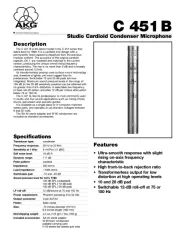
2 Augustus 2025
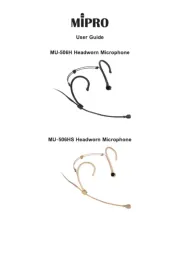
29 Juli 2025
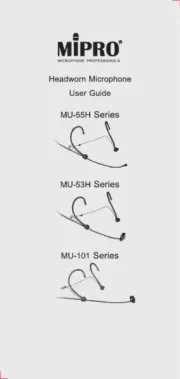
29 Juli 2025
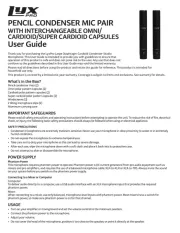
29 Juli 2025

29 Juli 2025
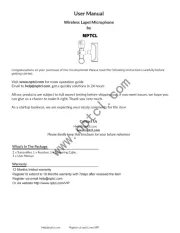
28 Juli 2025

28 Juli 2025
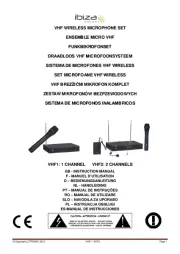
28 Juli 2025
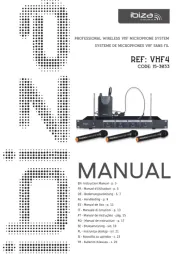
28 Juli 2025
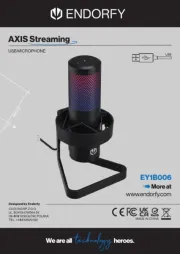
23 Juli 2025